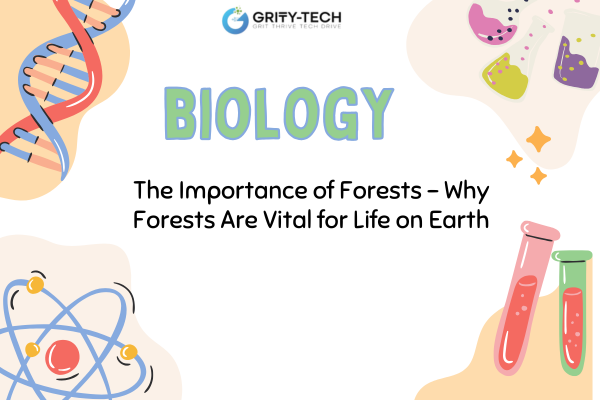Introduction – What Makes Metals and Non-Metals Special?
Take a look around you—your coins, wires, pans, and even jewelry are made from materials called metals. But what about things like plastic, rubber, or the air you breathe? These belong to another group called non-metals. In science, we classify elements based on their properties—and metals and non-metals are two big families in the periodic table. They look different, behave differently, and have different uses in our everyday lives.
expert-led Chemistry classes – visit our website to learn more
What Are Metals?
Metals are materials that are usually shiny, hard, and good conductors of heat and electricity. Most metals are strong, malleable (can be hammered into sheets), and ductile (can be stretched into wires). That’s why metals are used in making tools, machines, wires, and cooking utensils.
Let’s look at some examples of metals:
- Iron (Fe) – Strong and used to build structures and tools. From bridges to gates, iron provides strength and durability.
- Copper (Cu) – Excellent conductor, used in wires. You’ll find it inside your charger cables and electric circuits.
- Aluminium (Al) – Lightweight and doesn’t rust easily. It’s perfect for making foil, cans, and even airplanes.
- Gold (Au) and Silver (Ag) – Shiny and valuable, often used in jewelry. They are not only pretty but also very good at conducting electricity.

What Are Non-Metals?
Non-metals are usually dull, brittle, and poor conductors of heat and electricity. They don’t shine like metals and cannot be hammered or stretched. But that doesn’t mean they’re not useful! In fact, non-metals play important roles in breathing, cleaning, and even growing food.
Examples of non-metals include:
- Oxygen (O₂) – Essential for breathing. Without it, we couldn’t survive even a few minutes!
- Carbon (C) – Found in all living things. It forms the base of everything from plants to our own bodies.
- Sulfur (S) – Used in medicines and fertilizers. It helps plants grow and also fights germs.
- Chlorine (Cl₂) – Used to purify water. A small amount of chlorine keeps our drinking water clean and safe.
Comparison – Metals vs. Non-Metals
Here’s a side-by-side comparison to help you see the key differences:
| Property | Metals | Non-Metals |
| Appearance | Shiny | Dull |
| State | Mostly solids | Solids, liquids, or gases |
| Conductivity | Good conductors | Poor conductors |
| Malleability | Malleable | Brittle |
| Ductility | Ductile | Not ductile |
| Sonority (Sound) | Sonorous (ringing sound) | Not sonorous |
By observing these differences, scientists can easily classify materials as metals or non-metals. While metals are more commonly used in industries and construction, non-metals play crucial roles in daily life and nature.
Reactivity of Metals and Non-Metals
Metals and non-metals react differently with substances like air, water, and acids. These reactions help us understand their chemical properties better.
- Metals react with oxygen to form metal oxides, which are usually basic in nature. For example, iron reacts with oxygen in the air to form iron oxide, commonly known as rust.
- Non-metals react with oxygen to form non-metal oxides, which are often acidic. For example, carbon reacts with oxygen to form carbon dioxide.
- Metals react with acids to release hydrogen gas. This fizzing reaction is a classic lab experiment! On the other hand, non-metals usually do not react with acids.
Core Concepts – What You Should Know
Understanding these basic terms will help you remember the properties of metals and non-metals more easily:
| Term | Meaning | Example |
| Metal | Shiny, strong material that conducts electricity & heat | Iron, copper |
| Non-Metal | Dull, brittle material that does not conduct well | Oxygen, carbon |
| Malleable | Can be beaten into sheets | Aluminium foil |
| Ductile | Can be stretched into wires | Copper wire |
| Sonorous | Makes a ringing sound when hit | Bell made of metal |
These concepts are the foundation of how we classify and use materials in science and in our daily lives.
FAQs – Curious Questions About Metals and Non-Metals
Q1: Are all metals hard?
Most metals are hard, but not all. For example, sodium and potassium are so soft that they can be cut with a knife!
Q2: Can non-metals conduct electricity?
Generally, non-metals don’t conduct electricity, but graphite, a form of carbon, is an exception. It can conduct electricity and is used in pencil leads and electrodes.
Q3: Why don’t we use non-metals for cooking utensils?
Non-metals are poor conductors of heat and can be brittle. That’s why metals, which heat up quickly and are strong, are better suited for cooking utensils.
Fun Facts About Metals and Non-Metals
- Gold is so soft and ductile that a single gram can be stretched into a wire almost 2 kilometers long!
- Helium, a non-metal gas, is so light that it makes balloons float high into the sky.
- Copper is used in nearly every electronic device—from smartphones to home wiring—because of its excellent conductivity.
Conclusion – Strong, Shiny, Soft, or Silent? It All Matters!
Metals and non-metals are everywhere in our lives—from the coins in our pockets to the air we breathe. Understanding their properties helps us choose the right material for the right job. Whether it’s building bridges, conducting electricity, or purifying water—knowing the difference between metals and non-metals makes you a smarter scientist in the real world!








